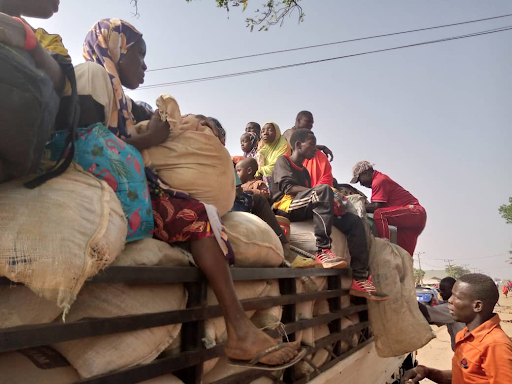Shiroro: Once a Safe Town, Now a Haven for Boko Haram’s Violent Campaigns (1)
HumAngle investigates how relentless armed violence in Shiroro, Niger State, is undermining a major hydropower station and other human natural resources—revealing the roots of a crisis with far-reaching national consequences.
The vices in Shiroro Local Government Area (LGA) are shielded in a serene atmosphere in Niger State, North-central Nigeria. At the LGA’s headquarters in Kuta, one notices a terrain of fragile tranquillity where everyone seems to care for one another. On the town’s shores, however, an eyesore of anti-state activities thrives. Gun triggers are pulled to bludgeon lives out of innocent souls; women and girls are kidnapped to be gang-raped; and boys are recruited and brainwashed into killing in the name of religion.
Hundreds of communities in Shiroro have lost their lives. Many of the survivors, displaced and devastated, now crowd into makeshift camps in Kuta, enduring hardship with only sparse and irregular government assistance. Niger State is in the grip of a twin crisis—where lives are torn between the fractured but still deadly remnants of Boko Haram fighters and the unrelenting violence of marauding local armed groups.
In this unfolding catastrophe, the absence of meaningful intervention resounds more loudly than the gunfire itself. The people suffer gruesome attacks, and villagers are displaced en masse. Then, soldiers fighting the terrorists withdraw from communities, turning them into ungoverned spaces. Now, Shiroro has not only lost its peaceful glory, but also become a slaughterhouse.
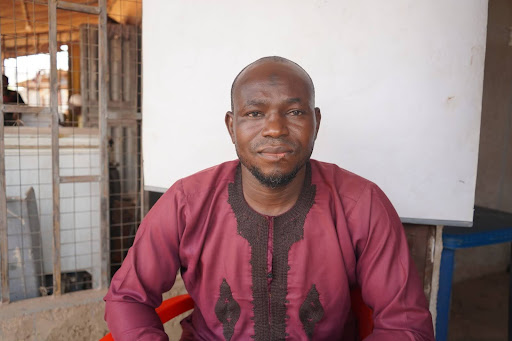
One chilling morning in April last year, hundreds of townspeople from the Allawa community in Shiroro town placed their luggage on their heads and shoulders and fled after soldiers who were supposed to protect them deserted the area. Most were temporarily relocated to camps in Kuta, Gwada, Erena, and Zumba.
“Today, nobody lives in Allawa in the Lakpma axis of Shiroro due to terrorist incursions,” Rabiu Iliyasu, one of the displaced locals from Allawa, told HumAngle. “This is a place blessed with population, fertile land for agriculture, minerals, and a huge forest reserve.”
Iliyasu, a farmer and trader, buries his sorrowful past in his cheerful face, but his wrinkles expose the tragedy that has befallen him. He currently lives in a displacement camp in Kuta; his home and livelihood were stolen from him by Boko Haram when they took over his hometown in Allawa.
Allawa lies on the shores of Shiroro in the Lakpma axis of Niger State. The axis comprises eight wards: Bassa, Allawa, Manta, Kushaka, Kurebe, Kwaki, Chukuba, Erena, and Galkogo. These agrarian communities have experienced the most significant impact in Shiroro, which hosts the hydropower station—an invaluable national asset.
Life was good in the Lakpma axis until rural terrorists ravaged communities, rustling cows, seeking protection taxes, and kidnapping for ransom. The terrorists were motivated by the millions raked in from ransoms forcefully collected from local communities. The story, however, changed when insurgents with roots in the northeastern Borno State emerged, forming a base in Shiroro. The government’s negligence paved the way for the thriving terror groups, locals said.
“Before now, I used to be a yam trader; I used to harvest over 500 bags of corn. I was a millionaire, but now I find it difficult to survive. The ransom we were paying them reduced us to what we are today. When our parents or children are kidnapped, we have to pay them because we don’t have a choice,” Iliyasu said, lamenting bitterly about how the spate of terrorism has killed his economic life.
“They started kidnapping our people and collecting money and farm produce. Now, it has become the wanton killing of innocent residents in those communities. They later switched to slaughtering men in front of their wives and children.”
The vicious villains
After the death of Abubakar Shekau, the former Boko Haram leader, in May 2021, the criminal enterprise became fractured. HumAngle has uncovered three major trajectories taken by former Boko Haram and some ISWAP fighters. While some combatants opted to lay down their arms, embracing the Nigerian government’s amnesty and deradicalisation programme in a bid to rejoin society through official channels, others chose a more covert path, slipping quietly into far-flung towns and cities, attempting to erase their militant pasts and start anew, undetected among civilian populations.
However, some fighters migrated to the volatile northwestern region, where the absence of centralised command structures has created a fertile ground for them. They continued their violent campaigns, driven by the prospect of fresh battles, access to looted resources, and ransom payments, without the risk of turning on each other with the weapons once aimed at their common enemies, as is now the case in the Lake Chad region.
When the Boko Haram group germinated in Niger State in 2021, the fighters collaborated with existing local allies, settling in Kaure, a small village in Shiroro. The violent insurgent group, notorious for preaching against secular education, has spread its extremist gospel across Nigeria and the southern edges of the Sahel. From its birthplace in Borno, the group spread to the northwest and north-central states.
As they settled into Niger State, through the Hudawa forest in the neighbouring Kaduna State, the former governor of the state, Abubakar Bello, cried out, asking security agencies to help him flush them out. At the time, the insurgents had displaced over 3000 people and murdered hundreds of others.
“I am confirming that there are Boko Haram elements here in Niger State,” Bello said, adding that the terrorists “have hoisted their flags here.”
One man, known only as Mallam Sadiqu, a long-time associate of Boko Haram founder Muhammad Yusuf and later Abubakar Shekau, emerged at the centre of a dangerous resurgence. After briefly distancing himself from Boko Haram to rejoin the lesser-known Darul Islam sect, he returned with renewed conviction as a staunch Shekau loyalist.
Sadiqu is believed to be the mastermind behind the notorious Kaduna train abduction. This single, meticulously planned operation allegedly yielded over ₦1 billion in ransom, one of the largest proceeds of terror that Nigeria has ever recorded in a single attack, according to multiple accounts. With this windfall, he gained significant operational capacity and began spreading Boko Haram’s radical Islamist ideology throughout Niger State and its surrounding areas.
Backed by resources and reputation, Sadiqu built a growing network of followers and foot soldiers. Under his command, the insurgent group’s extremist teachings were not only revived but actively domesticated and localised, transforming quiet rural communities into recruitment and indoctrination hubs.
Sadiqu introduced heavy weaponry in Shiroro and its surroundings, particularly in the Lakma axis of the town, according to various accounts from locals, security agents, and experts. He exploited the existing rural terrorism in the area to build a strong insurgent empire.
“The Boko Haram terrorists and ISWAP have their camps there,” Dangana Yusuf, a displaced local from Chukuba, reiterated. “We have notorious terrorists like Dogo Gide; Bello Turji has a part of his camp there. We also have one called Yellow Jan Bros, all within our vast community and neighbouring ones.”
By early 2022, Sadiqu’s terror had dominated the terrain, overshadowing Dogo Gide, his ally, who is also a terrorist leader operating in Shiroro and, more prominently, Nigeria’s northwestern region. Although rural terrorists still perpetrate crimes such as cattle rustling, kidnapping for ransom, and illegal taxation of farmers, the Boko Haram fractured insurgency has now forged its way into the majority of communities in Shiroro, turning the town into a haven of violent insurgents.
That year, the then-governor directed the incessant attacks at the then-president, Muhammadu Buhari. “In January this year (2022) alone, we suffered not less than 50 reported attacks and loss of lives between January 1 and 17. Within the same period, no fewer than 300 communities were invaded by bandits. The number of people kidnapped is 200, including three Chinese nationals,” he said.
Notably, the spate of insurgent attacks slowed in 2023, especially towards the general elections. Data gathered from the Armed Conflict Location and Event Data (ACLED) Project shows that many Nigerian states, including Niger State, recorded remarkable improvements in security that year, with a significant reduction in death toll.
Niger State had recorded only 604 fatalities in 2023, which is a sharp drop from the 1414 death toll documented in the previous year. But as soon as the transfer of power at both state and federal levels occurred, the terrorists came back—albeit bigger than ever.

A recent visit to Shiroro by HumAngle showed that the situation has only gotten worse, as communities like Allawa, Kwaki, and Chukuba are still infiltrated by terrorists who leverage informants.
“These terrorists are still in these communities…We have a game reserve in Allawa. As I’m speaking to you now, it is inaccessible. Before now, we carried out hunting activities in these areas, but now it is heavily dominated by terrorist groups,” Dangana Yusuf said.
Deep within the lush canopy of the Alawa Forest, a shadowy world of terrorism has taken root. This once-pristine wilderness, teeming with life and colour, has been overrun by criminal cartels who use its dense foliage as a cloak for their illicit endeavours.
Like cancer, the extremist groups ravage the surrounding landscape, leaving devastation in their wake. Homes are pillaged, livestock stolen, and innocent civilians coerced into paying hefty bribes. The forest’s ancient trees stand sentinel as kidnapping and ransom demands become the terrorists’ grim currency.
“Allawa is affected, and it cannot be accessed. Bassa is seriously affected, too. There are some DSS presently in Bassa, but they are within the community; they cannot access the hideouts of these terrorists. Chukuba, Kudodo, Kaure, Kurebe, Kushaka, and Erena are still affected. Last week, they came to Erena and attacked the market. Surprisingly, there are security personnel in Erena,” Yusuf noted.
Describing how the terrorist leader established his roots in Shiroro, locals said Sadiqu presented himself as a servant of God, preaching Islamic jurisprudence and urging residents to “fear Allah.” They described his words as laced with a false sense of piety, intended to gain trust.
As he gained traction, he slowly revealed more radical intentions, proclaiming himself a Boko Haram commander and a “constituted authority.”
With his newfound power, Sadiqu set up a shadow government, complete with a cabinet and a set of rules and regulations. He publicly declared his mission to overthrow the government and establish an Islamic state. Locals who interacted with him described him as cunning, reassuring the public that he meant no harm and that his fight was solely against the government. He even promised that people could live their everyday lives if they adhered to his “protocols”.
Sadiqu’s tactics were a classic example of the Boko Haram playbook, which emphasises the use of force and intimidation to achieve its goals. As he solidified his power, his followers began to carry guns, and his message of Islamic extremism spread like wildfire. The communities were caught off guard.
The killer next door
Sadly, locals are forced to make a devil’s bargain with their tormentors in many Shiroro communities. A 50-50 arrangement, where half of every harvest is surrendered to the terrorists, has emerged. This bleak reality has become the new normal as families struggle to stay afloat.
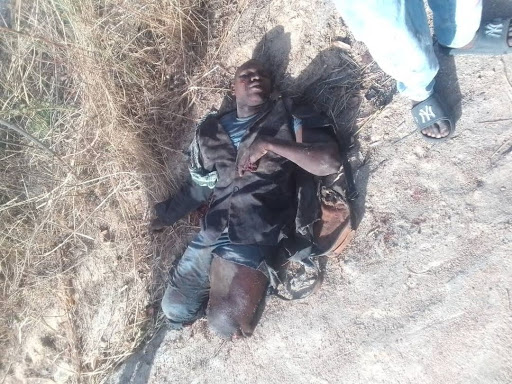
The hardship imposed on the civilians has also spawned a web of deceit, with some villagers pushed to betray their neighbours. The economic vice has tightened, with essential farming inputs like fertilisers becoming luxuries few can afford. As the noose of desperation tightens, some have been forced to choose between feeding their families and feeding the terrorists’ insatiable hunger for power. The result is a toxic dynamic where fear, hunger, and betrayal have become the currencies of everyday life.
“The issue of informants is a problem in our community,” Iliyasu stressed. “The hardship faced by our people has pushed some to become informants. Before, fertiliser was cheaper, but now it is expensive. How can a farmer afford to buy it when he needs a lot to farm? This has contributed to pushing some of our community members to become informants.”
Among many other cases, the incident of a certain man infamous for selling out his people to terrorists working in the Sadiqu-led camp is popular. For years, villagers in Shiroro lived alongside Gambo Garba. The day before his capture, a terrorist group had attacked Chiri, abducting over 35 villagers in 2021. As security measures were heightened, Garba was caught red-handed, tipping off a terrorist associate about the increased security presence.
Before being handed over to the authorities, Garba revealed that he was not the only one embedded in the community. He exposed Kabiru Nakuta, a respected farmer and community leader, as the mastermind behind Boko Haram and other terrorist conspiracies in Shiroro. Vigilantes raided Nakuta’s home in Chiri, uncovering a cache of firearms.
Nakuta’s cruel acts stunned the community. Behind his benevolent facade, they said, he was secretly fueling terrorism. “Who would have suspected Nakuta, a man we trusted with our security concerns?” a local vigilante wondered. “His betrayal is a stark reminder that even the most unlikely individuals can hide sinister intentions.”
How can authorities sever the moles nourishing Boko Haram terrorism in Shiroro?
To expose these hidden collaborators, experts recommend a major transformation in the government’s approach. Rather than relying solely on kinetic force, the government must first repair the tattered fabric of trust with its citizens.
“Many informants are unwittingly entangled in this web of deceit, driven by desperation and a sense of abandonment,” observed Danjuma Muhammad, an internal security expert in the state. “They’re forced to seek refuge in the shadows, as the government’s failure to provide security has left them feeling vulnerable and exposed.”
Buried bombs, shattered limbs
In many ravaged communities of Shiroro, insurgents have planted landmines along crucial routes and fertile farmlands, claiming innocent lives, inflicting grievous injuries, and leaving locals in despair.
“I have lost my relatives as a result of land mines planted in these communities, especially in Bassa,” Iliyasu told HumAngle. A lot of people lost their lives and legs due to landmines. Recently, some mines were dug out. Those who were not, they set the place on fire to destroy them. Till now, there are landmines planted in some communities.”
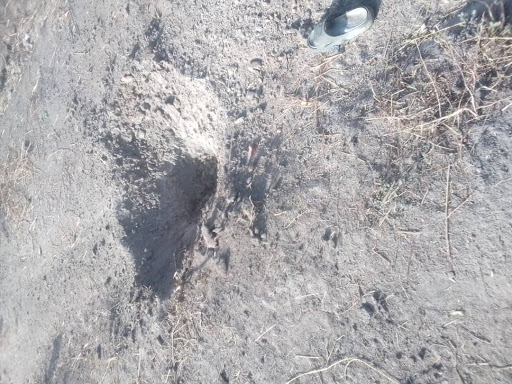
Iliyasu had documented victims of landmines in his Allawa community before terrorists displaced him and his family. HumAngle has also seen photos and footage of children, teenagers, and adults who stepped on landmines planted by terrorists.

The rising toll of casualties has made it increasingly difficult for residents who have chosen to remain within these communities to move around, effectively turning the communities into ghost towns.
“What is happening now is that they have planted landmines almost everywhere in our community. I can confirm that the number of people who have been killed in these communities is about 600. These are people that we know. No family is not affected or has not lost someone,” Ahmed Almustapha of the Rumache community in Bassa told HumAngle, corroborating Iliyasu.
The strategic planting of landmines appears to be a calculated move by insurgent groups operating in the region. By rendering roads and farmlands unsafe, they aim to instil fear, restrict movement, and tighten their grip on these communities. This tactic not only forces residents into submission but also disrupts the local economy, as agriculture and trade are essential to the survival of these rural communities.
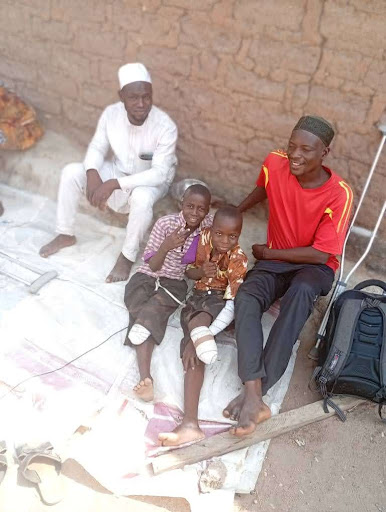
The threat of landmines has also impacted military operations in the past. In November 2023, terrorists ambushed military personnel escorting civilians along the Allawa-Pandogari road in Shiroro LGA. They had planted landmines that detonated upon contact with military vehicles, leading to casualties.
In December last year, a series of explosions occurred in the Bassa community, resulting in the deaths of three people and injuries to five others. In response, the state government restricted movements in areas suspected to contain landmines until military demining operations were concluded. To date, the demining operations haven’t been concluded, locals said.
The rise of terror enclaves
There are ungoverned spaces in Shiroro, Rafi, Munya, and other rural communities where terrorism has flourished.
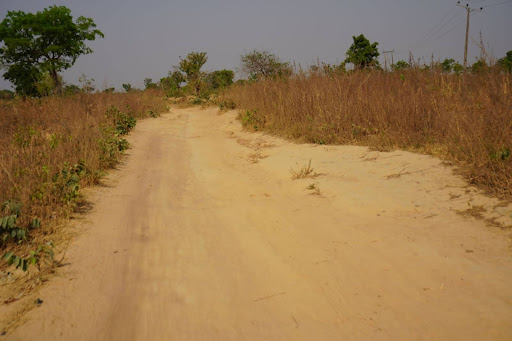
HumAngle’s investigation found that a significant portion of the Lapkma axis in Shiroro is ungoverned. Communities like Allawa and Bassa in Shiroro are characterised by a lack of effective governance control and security architectures, thereby providing a fertile ground for terror and other forms of violent activities to thrive.
Now effectively off-limits to security forces and firmly under the grip of terrorist groups, residents paint a dire picture of affected communities.
“These areas have become virtual no-go zones for security personnel,” said Yusuf. “In the past, police stations were bustling with over 15 officers, but now you’re lucky to find even two or three. It’s as if they’ve vanished into thin air.”
The once-visible military presence has also melted away, leaving a gaping security vacuum. “We used to see soldiers patrolling our community, but now they’re nowhere to be found,” Yusuf lamented. “We urgently need reinforcements to bridge this security chasm.”
Rabiu Iliyasu echoed this sentiment, recalling how security forces once ventured into the forests, seizing guns and motorcycles from terrorists. “But they’ve since stopped attacking their hideouts, opting instead to hunker down in select communities.”
The Shiroro town is home to the Shiroro Hydroelectric Power Station, one of the country’s most vital power-generating facilities. Representing a cornerstone of Nigeria, the Shiroro Power Station is a critical national asset; however, the area hosting it requires deliberate and robust safeguarding against threats, particularly in light of the increasing insurgent and terrorist activities in the surrounding region. Disruption of operations several times in the past has resulted in massive power outages, paralysing key sectors, and threatening national stability. The area is presently a focal point of contention between state forces and factions led by Sadiqu, among others, with the hydropower plant being completely secured by security forces.
The human cost of this security retreat has been devastating. “Countless security personnel have lost their lives in these communities,” Iliyasu somberly noted. “Terrorists lie in wait, ambushing and killing many brave officers. The toll is staggering.”
When HumAngle visited Shiroro, we observed a lack of adequate infrastructure and poor road networks, particularly in communities with a large landmass and rugged terrain. We took a 45-minute ride on a motorcycle from Kuta to Zumba via Ebbe. From Kuta to Ebbe, stretching to Zumba, the community housing the hydropower house, the road was unpaved and rough as we rode through the vast forest with its stony contours. There was no sight of any security personnel or outpost; only motorcycles loaded with ice water were sighted.
Beyond Kuta-Zumba, HumAngle also noted that Shiroro and environs have several visible areas of ungoverned space characterised by vast, rugged terrain with hilly contours, dense forests, and remote settlements. These areas, particularly those bordering regions, are difficult to access, making them hotspots for rural terrorism and insurgent activities.
This is the first of the three-part series investigation the human costs of the infiltration of Boko Haram elements in Niger state. The next part digs into the terror around the Shiroro Power Station and the deadly cost of hosting a national treasure.
HumAngle's investigation in Shiroro, Niger State, reveals dire conditions caused by insurgent activities and government neglect.
This once peaceful area is now overrun by Boko Haram and local armed groups, leading to widespread violence, displacement, and lawlessness.
The economy is shattered as locals are forced into ransom payments and dangerous agreements with terrorists, while landmines and insecurity impede daily life and agriculture, turning communities into ghost towns.
Despite some security efforts, the lack of lasting interventions has resulted in ungoverned spaces which prove fertile for terrorism, with Shiroro's power station and surrounding areas remaining flashpoints of conflict and instability.
Support Our Journalism
There are millions of ordinary people affected by conflict in Africa whose stories are missing in the mainstream media. HumAngle is determined to tell those challenging and under-reported stories, hoping that the people impacted by these conflicts will find the safety and security they deserve.
To ensure that we continue to provide public service coverage, we have a small favour to ask you. We want you to be part of our journalistic endeavour by contributing a token to us.
Your donation will further promote a robust, free, and independent media.
Donate HereStay Closer To The Stories That Matter

